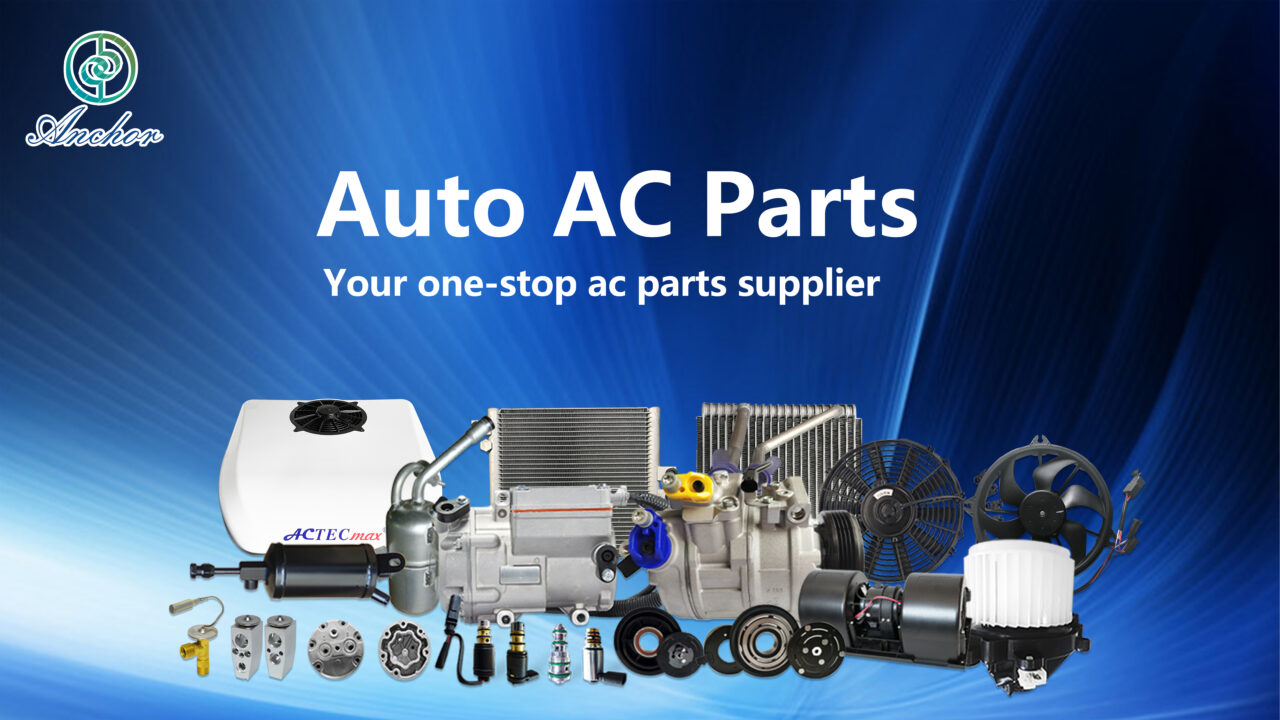
A properly functioning car air conditioning (AC) system is essential for a comfortable and enjoyable driving experience, especially during hot summer months. Understanding the key components of a car AC system is important for maintenance and troubleshooting purposes. In this article, we will delve into the vital parts of a car AC system components, shedding light on their functions and significance.
- Compressor:
The compressor is the heart of the car AC system. It is responsible for compressing the refrigerant gas, raising its pressure and temperature. The compressed refrigerant then flows to the condenser for further processing.
- Condenser:
The condenser, typically located in front of the vehicle’s radiator, acts as a heat exchanger. Its primary function is to release heat from the high-pressure refrigerant gas, causing it to condense into a high-pressure liquid. The condenser facilitates the dissipation of heat, ensuring efficient cooling.
- Receiver/Dryer or Accumulator:
The receiver/dryer or accumulator plays a crucial role in the car AC system components. It serves as a storage container for the refrigerant, removing any moisture present in the system. Additionally, it contains a desiccant that absorbs moisture, preventing potential damage to the AC system.
- Expansion Valve or Orifice Tube:
The expansion valve or orifice tube regulates the flow of refrigerant from the high-pressure side of the system to the low-pressure side. It creates a pressure drop, allowing the refrigerant to expand rapidly, which results in a significant temperature drop.
- Evaporator:
Situated inside the vehicle’s cabin, the evaporator is responsible for cooling the air that enters the car’s interior. As the low-pressure liquid refrigerant flows through the evaporator’s coils, it absorbs heat from the surrounding air, resulting in chilled air being blown into the cabin.
- Blower Motor and Fan:
The blower motor and fan work in conjunction to circulate the cooled air from the evaporator through the car’s vents and into the cabin. The blower motor controls the speed of the fan, enabling the driver and passengers to adjust the airflow according to their preferences.
- HVAC Controls:
The HVAC controls consist of various switches, knobs, or electronic controls that allow users to adjust the temperature, fan speed, and airflow direction within the car. These controls provide the convenience and customization necessary to create a comfortable environment.
Conclusion:
A comprehensive understanding of the different parts of a car AC system component is vital for maintaining optimal cooling performance. From the compressor to the evaporator, each component plays a crucial role in ensuring a comfortable and enjoyable driving experience, especially during hot weather. By familiarizing yourself with these essential parts, you can better appreciate the intricate workings of your car’s AC system and address any issues that may arise. Remember to consult a professional technician for proper maintenance and repairs to keep your car’s AC system running smoothly.
A properly functioning car air conditioning (AC) system is paramount for a comfortable and enjoyable driving experience, particularly during scorching summer months. Understanding the essential components of a car AC system is crucial for both maintenance and troubleshooting purposes. In this article, we will delve into the vital parts of a car AC system, shedding light on their functions and significance.
Compressor: The compressor serves as the heart of the car AC system components. Its primary responsibility is to compress the refrigerant gas, elevating its pressure and temperature. The compressed refrigerant then travels to the condenser for further processing.
Condenser: Typically situated in front of the vehicle’s radiator, the condenser acts as a heat exchanger. Its main function is to release heat from the high-pressure refrigerant gas, causing it to condense into a high-pressure liquid. This process facilitates efficient cooling.
Receiver/Dryer or Accumulator: Playing a crucial role, the receiver/dryer or accumulator functions as a storage container for the refrigerant, eliminating any moisture present in the system. It also contains a desiccant that absorbs moisture, preventing potential damage to the AC system.
Expansion Valve or Orifice Tube: The expansion valve or orifice tube regulates the flow of refrigerant from the high-pressure side of the system to the low-pressure side. This mechanism creates a pressure drop, allowing the refrigerant to expand rapidly, resulting in a significant temperature drop.
Evaporator: Located inside the vehicle’s cabin, the evaporator is responsible for cooling the air entering the car’s interior. As the low-pressure liquid refrigerant flows through the evaporator’s coils, it absorbs heat from the surrounding air, producing chilled air blown into the cabin.
Blower Motor and Fan: Working in tandem, the blower motor and fan circulate the cooled air from the evaporator through the car’s vents and into the cabin. The blower motor controls the fan speed, enabling occupants to adjust the airflow according to their preferences.
HVAC Controls: Comprising various switches, knobs, or electronic controls, HVAC controls allow users to adjust the temperature, fan speed, and airflow direction within the car. These controls provide the convenience and customization necessary to create a comfortable driving environment.
Conclusion: A comprehensive understanding of the different parts of a car AC system is vital for maintaining optimal cooling performance. From the compressor to the evaporator, each component plays a crucial role in ensuring a comfortable driving experience, especially during hot weather. Familiarizing yourself with these essential parts enables better appreciation of your car’s AC system and facilitates addressing any arising issues. Always consult a professional technician for proper maintenance and repairs to keep your car’s AC system running smoothly.
Anchor Group is a leading supplier of high-quality OEM and aftermarket AC parts and tools for a wide range of vehicles, including passenger cars, coach buses, and heavy-duty trucks. We have built a reputation for providing exceptional value, convenience, and service to our customers. Our professionalism is reflected in top-notch results achieved daily through discipline, communication, and processes. Anchor integrates extensive technical and market knowledge within our wholly-owned facilities and headquarters, fostering collaboration with partner suppliers or distributors.
